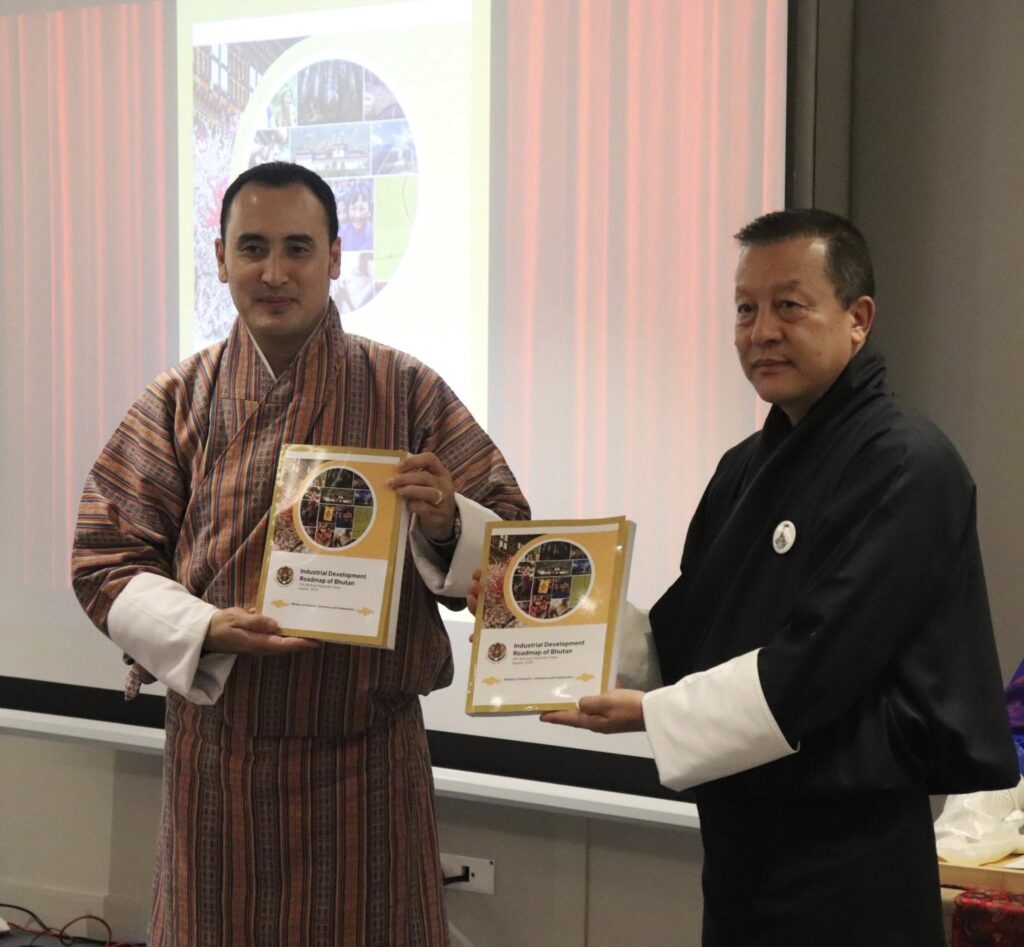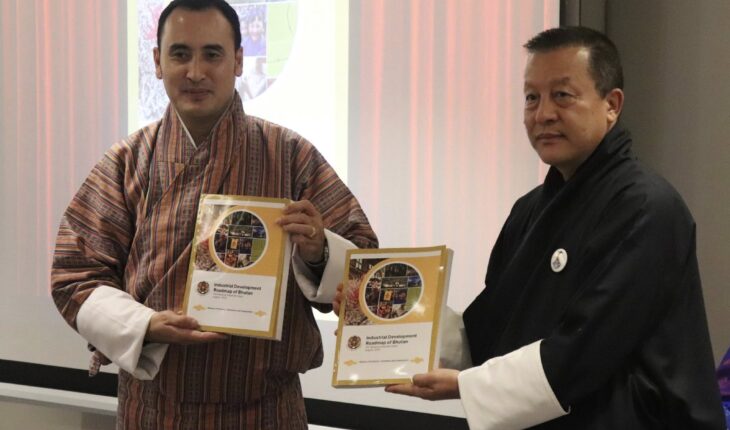
TIL BDR GHALLEY
Thimphu
The Ministry of Industry, Commerce and Employment (MoICE) has officially launched the Industrial Development Roadmap (IDR) 2025, a national initiative designed to redefine Bhutan’s approach to industrialization.
The IDR sets out a comprehensive strategy to transform the country’s industrial sector into a dynamic, inclusive, resilient, and globally competitive engine of economic prosperity.
According to MoICE, the IDR seeks to address long-standing structural challenges and establish a foundation for green, innovation-driven, and regionally balanced industrial growth.
“The roadmap reflects a strategic and future-ready framework to position Bhutan’s industries for sustainable development,” the ministry stated during the launch event.
The industrial sector currently contributes about 53 percent to Bhutan’s GDP but remains underdeveloped, with limited diversification, low value addition, and heavy reliance on imports.
Data from the 2023 Industrial Census showed that more than 95 percent of Bhutanese industries are small-scale or cottage-based, while nearly 59 percent are non-operational.
The IDR outlines ambitious targets for 2035, including the creation of more than 65,000 new industrial jobs, with 40 percent reserved for youth, women, and rural populations.
It also aims to raise the manufacturing sector’s share of GDP from 8 percent to 12 percent and increase the overall contribution of industry to 60 percent of GDP. In addition, the roadmap seeks to mobilize Nu. 300 billion in private and foreign investment, double the value of industrial exports, and reduce import dependency.
The roadmap identifies ten high-potential sectors selected based on Bhutan’s comparative advantages, sustainability priorities, and global demand trends.
These include agro-industries, creative industries, data center services, education services, forestry-based industries, ICT industries, MedTech wellness industries, mineral-based industries, renewable energy, and tourism.
Each sector will be supported by tailored interventions covering policy reforms, infrastructure development, financing mechanisms, skills training, technology adoption, and market access strategies.
The IDR adopts a dual-track strategy. The first track focuses on strengthening Bhutan’s overall industrial ecosystem through reforms in licensing procedures, regulatory frameworks, financing access, and digital infrastructure.
The second track centers on sector-specific action plans to unlock growth, foster innovation, and attract investment, while supporting Bhutan’s commitments to climate resilience and social equity.
Key strategic interventions under the roadmap include the establishment of an Industrial Development Finance Facility to provide concessional loans and credit guarantees for businesses.
The plan also calls for the development of smart industrial parks and regional industrial clusters, the promotion of green manufacturing practices, and the adoption of circular economy models.
Additional measures involve reforming State-Owned Enterprises to enhance private sector participation, digitizing approvals through an Integrated Business Licensing System, enabling cross-border digital payments, and expanding Technical and Vocational Education and Training (TVET) systems to achieve full alignment with industry requirements by 2032.
The Ministry emphasized that the IDR was the product of a rigorous, data-driven process carried out over four months by a 13-member task force under MoICE.
The development process included consultations with over 80 stakeholders from government agencies, the private sector, academia, and civil society. These engagements were conducted through 11 national consultation workshops to ensure the roadmap reflects diverse perspectives and needs.
Importantly, MoICE noted that the IDR is designed as a “working document,” allowing for periodic review and adaptation based on changing national priorities and evolving global economic conditions.
The roadmap’s flexibility is intended to keep Bhutan’s industrial policies responsive to emerging opportunities and challenges.
The IDR also aligns with Bhutan’s long-term vision under the 13th Five-Year Plan (2024–2029), which targets the country’s transformation into a High-Income GNH Economy by 2034. This follows Bhutan’s graduation from the United Nations’ Least Developed Country category in December 2023.
The roadmap is seen as a sector-specific tool to guide structural transformation while ensuring that economic development remains consistent with Bhutan’s social and environmental values.
With its ambitious targets and multi-faceted strategies, the Industrial Development Roadmap 2025 seeks to not only modernize Bhutan’s industrial base but also align economic growth with environmental sustainability and social well-being.





